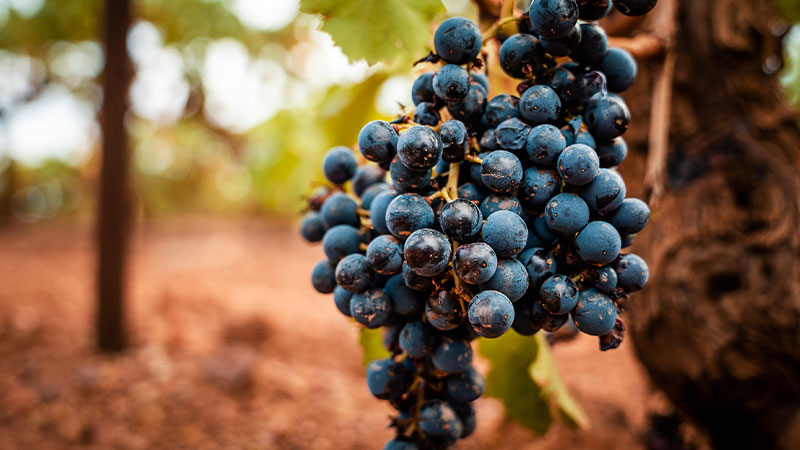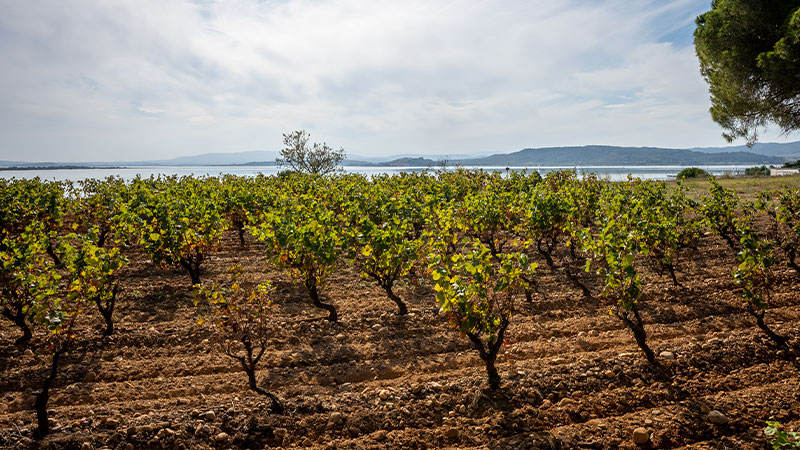
Winemaking has long been a part of the culture in AOP Languedoc, a benchmark region in the south of France with many vineyards existing in families for generations if not centuries. Today, the region has begun to celebrate this legacy with the wider world, bringing its ethos of “good vibes, good wines” — the idea of savoring the Mediterranean way of life and a slower pace, in essence vibrating with one’s surroundings — to new audiences. Long a treasure hidden in plain sight, the appellation is a favorite find for those who champion beauty, good living, and the natural and authentic in their daily rituals. Variety is the name of the game, with stunning whites, reds, and rosés planted from the coasts to the garrigue-scented hills and valleys — bottled sunshine that makes for some of the most prized French wines for the money.
Tasting True French Culture

The Languedoc encompasses more than 20 appellations; AOP Languedoc is the region’s flagship appellation, spanning from Nîmes on the Mediterranean Sea to the Spanish border — an expansive terrain that rises from the coast to the hilly and mountainous Cévennes and Montagne Noire.
Winemaking dates back to the 5th century B.C. when the Greeks planted the first vines and established a vibrant local culture, later immortalized by the Romans. The winemakers of AOP Languedoc inherited this dynamic and enterprising spirit, with a strong connection to preserving their diverse terroir for generations to come.
Fresh and French: the Reds of AOP Languedoc
Red lovers are in luck, as AOP Languedoc is known for rich blends made predominantly with Grenache, Syrah, Carignan, and Cinsault, as well as up-and-coming varieties like Mourvèdre. For some of the most popular blends, Grenache is often combined with more tannin-rich grapes to produce full-bodied, refined wines with notes of stone fruit.
Despite high temps during the summer ripening season, AOP Languedoc reds have a refreshing-tasting profile, a benefit of cooling Mediterranean breezes. Syrah-based wines show depth and appealing fruit character, with hints of spice and currant, making them ideal for aging. Carignan is also a native grape of AOP Languedoc, with local winemakers often blending it with Cinsault to add notes of black fruit, red raspberry, and balsamic.
Most of the region’s elevated reds are produced from older vines often matured in oak casks and amphorae to create striking, richly flavored reds with medium body, excellent ripeness, and balanced acidity. Fire up the grill: AOP Languedoc wines are ideal for pairing with grilled meat and vegetables, but also hold their own with decadent chocolate desserts.
Cooling Breezes and Sunny Whites
With over 300 days of sunshine yearly, AOP Languedoc’s vines are known for producing crisp, well-structured whites. Many blends are made from Grenache Blanc and Vermentino (called Rolle in the south of France), as well as cool heirloom grapes like Clairette and Bourboulenc. Local Sauvignon Blanc is known for its hints of melon and lemongrass, making it ideal for pairing with seafood, light pasta dishes, and fruit tarts.
Many winemakers credit the region’s dry climate — with some areas receiving among France’s lowest rainfall — with creating a lively character. The region’s white wines also get their fresh and bright flavor from AOP Languedoc’s position between the mountains and the Mediterranean Sea, which offers both cooling breezes and sunny skies for most of the growing season.
Tour de Force Rosé
It should come as no surprise that AOP Languedoc rosé is a tour de force. Winemakers in the south of France are experts with pink wine in every hue. Rosé accounts for more than half of local production in AOP Languedoc and often includes a generous amount of Cinsault to add a touch of tart berry and freshness. These light and joyous wines are ideal for just about any occasion from aperitif hour to pairing with cheese plates, classic hors d’oeuvres, salads, or herb-roasted chicken.
A Commitment to Organic

In many ways, AOP Languedoc is at the vanguard of French wine. With a new generation of makers, sustainability and biodiversity are top of mind, leading vintners to combine tradition with technology to revitalize the region’s appellations and produce France’s most significant percentage of organic wines. Many credit the region’s dry climate and strong coastal winds with the ability to deter pests sans harsh chemicals, and today, 36 percent of all organic French wine comes from the larger Languedoc region (an impressive 7 percent of all global organic vineyards). Environmental responsibility is at an all-time high and growing in AOP Languedoc: 30 percent of producers are certified sustainable, with a goal of reaching 60 percent sustainable certification within the next five years.
All of this comes down to choices that every producer – from the smallest family-owned producers to the largest domaines – is confronting to preserve the future of their terroir in the face of climate change. It’s another aspect of the “cool” factor and open-minded approach at work in the vineyards of AOP Languedoc today.
Sunny, warm, and welcoming, AOP Languedoc is sending good vibes that match the lively range of their wines.
This article is sponsored by Languedoc Wines.